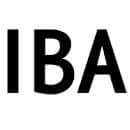If you are interested in starting up your own business without any partners, a sole proprietorship may be the best choice for you. The day you start your business, the IRS assumes that your business is operating as a sole proprietorship. In other words, you do not have to register with any entity for your business to become a sole proprietorship, making this by far the easiest business organization to set up.
Registering a Sole Proprietorship
Unlike an LLC or Inc, you generally do not have to go through any paperwork to begin your business as a sole proprietorship. The general exception to this rule is if you want to run your business under a different name other than your actual name. For example, if John Smith has a Shirt business that is operating as a sole proprietorship, his legal business name for his shirt company is John Smith. If John would like to continue running his Sole Proprietorship, but wants to change his legal business name, he has to register for a DBA, or Fictitious Name.
If you would like to operate your Sole Proprietorship under a different name but do not want to form an LLC (Limited Liability Company) or Corporation, you can file a DBA (Doing Business As) Name: Click here to learn more about DBA (Doing Business As).
Sole Proprietorship – Liability
The bad side of the Sole Proprietorship is that you, personally, are liable for any business-related obligations or lawsuits that may arise against your business. What this means that if your business doesn’t pay a debt or is found liable in a lawsuit, your personal monies and assets are up for grabs. Sole Proprietorships are great for start-up or small businesses, but if your business grows you should definitely consider an LLC, S-Corp or C-Corp.
Sole Proprietorship – Tax
As a Sole Proprietorship, your business is not an entity in itself. This means that the IRS does not see your business as a taxable entity and all of your business’s assets and liabilities are considered your assets and liabilities and are to be reported on your personal income tax return. You report your business’s assets and liabilities on the “Profit or Loss from Business” (Form 1040 – Schedule C) section or the “Net Profit from Business” (Schedule C-EZ) of your income tax return.
Because the IRS considers you to be receiving self-employment income, you have to pay 15.3% tax on that additional income. When you’re working for someone else, the employer pays half of those taxes and you pay the other half, but now that you are employing yourself you get stuck with both ends of it – bummer.

